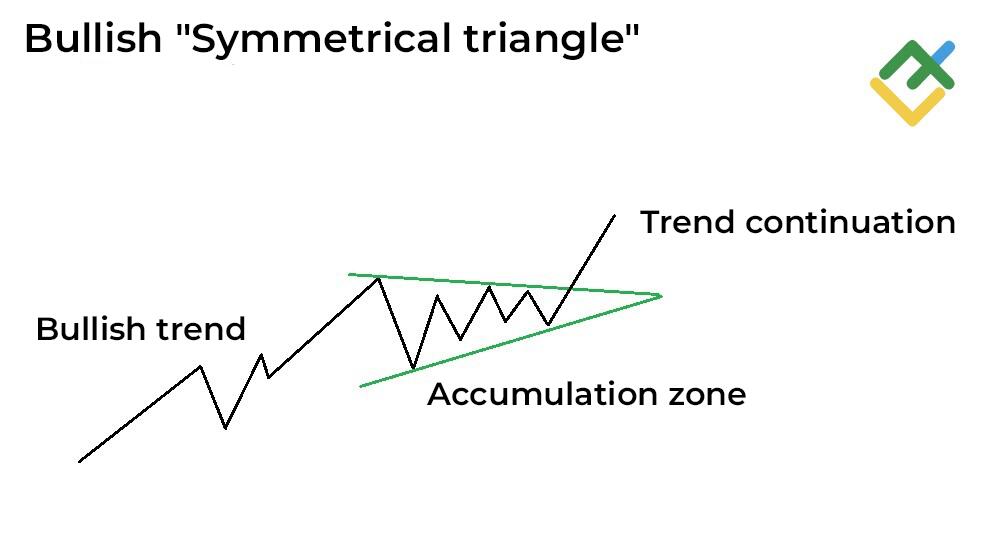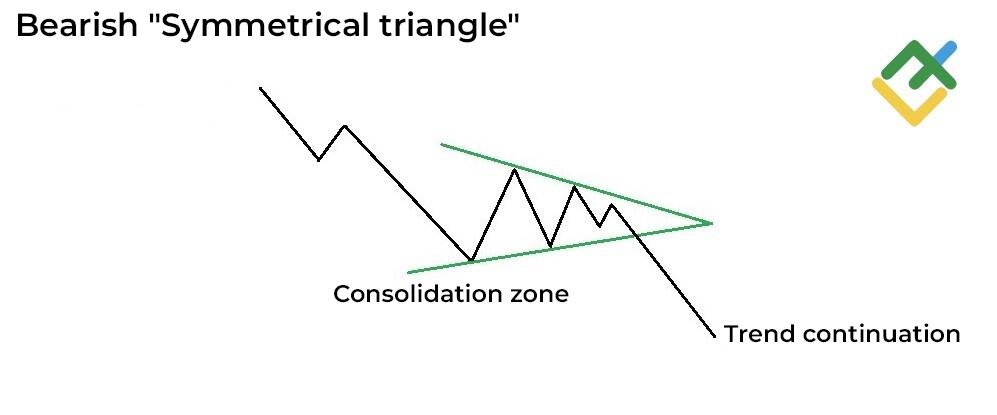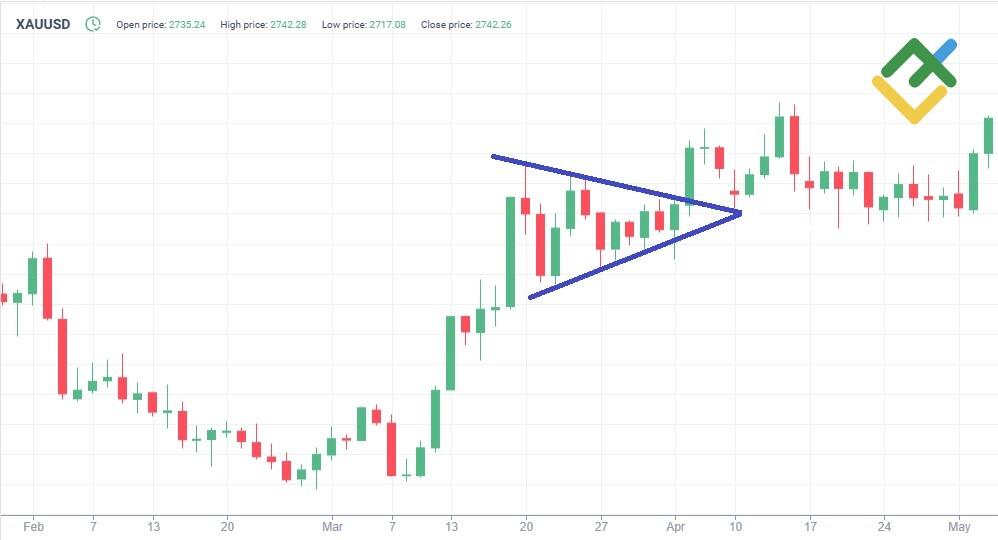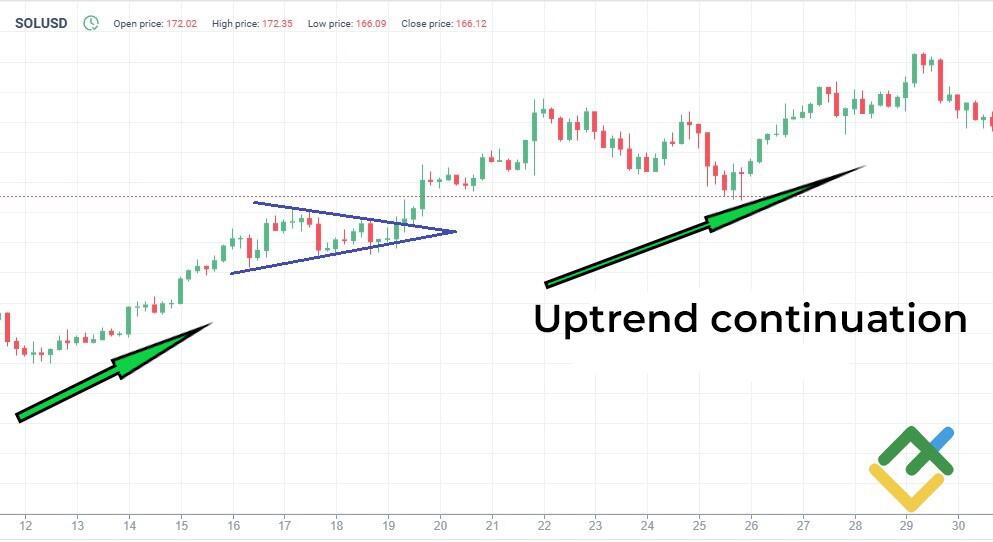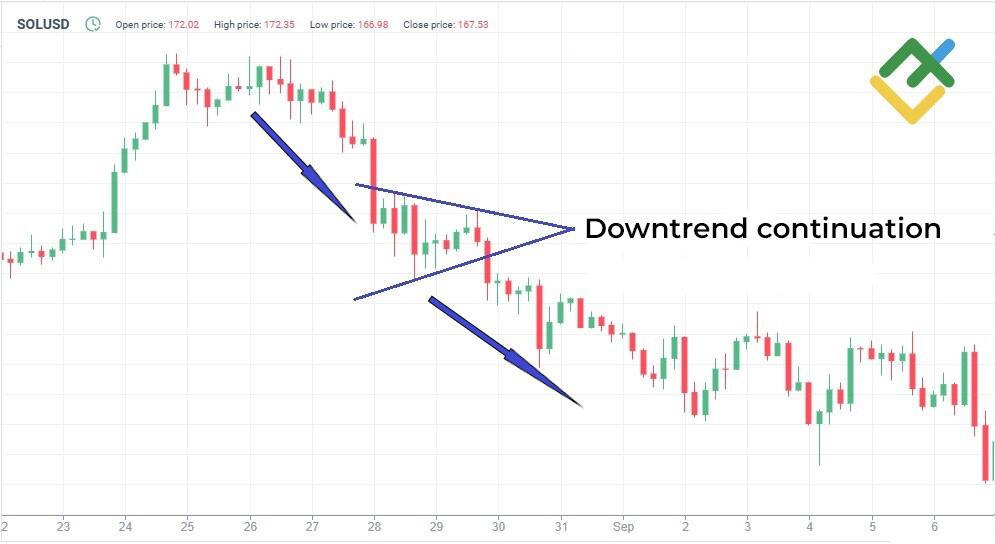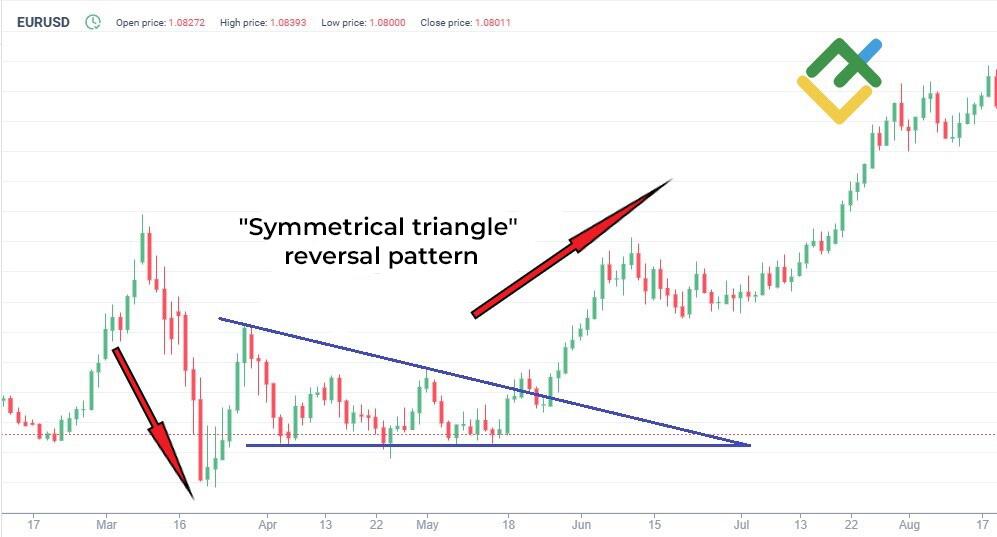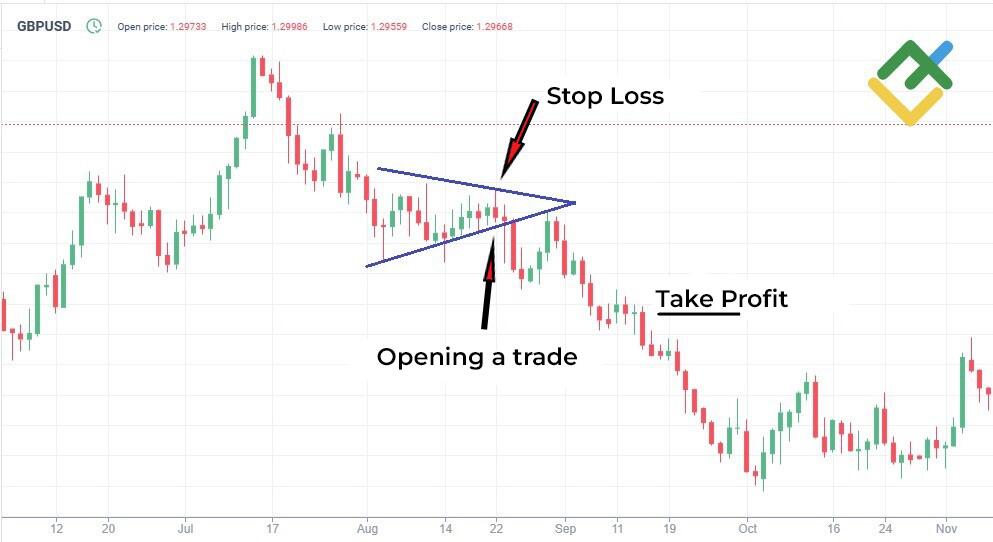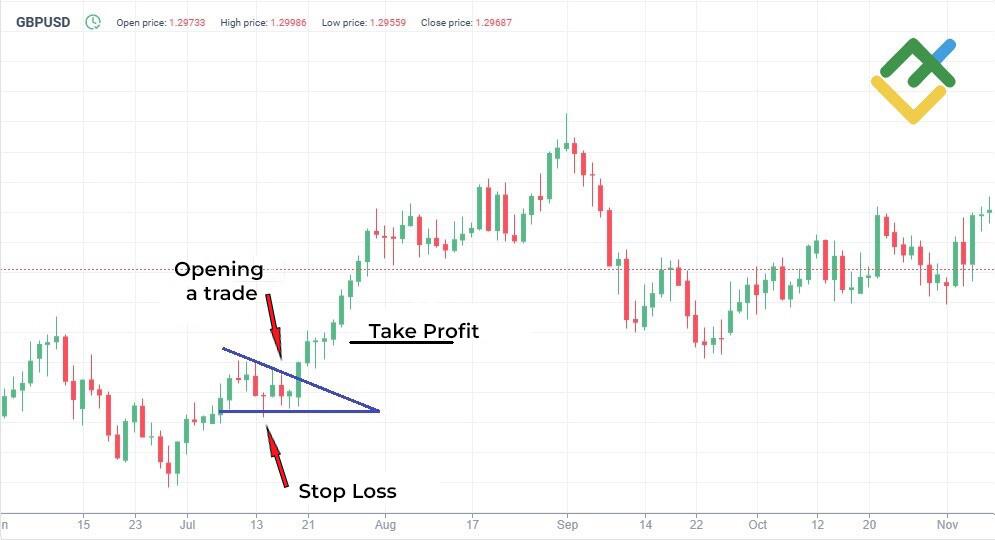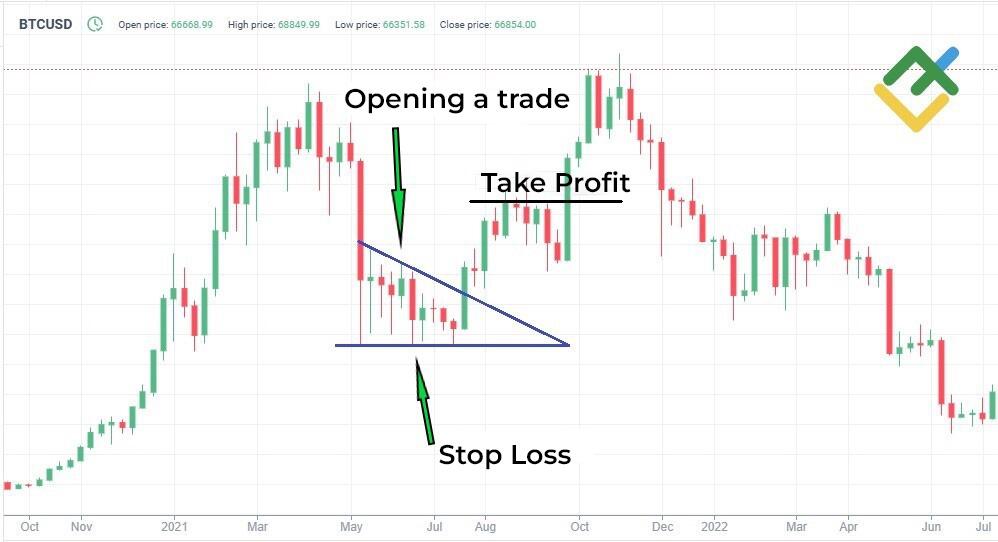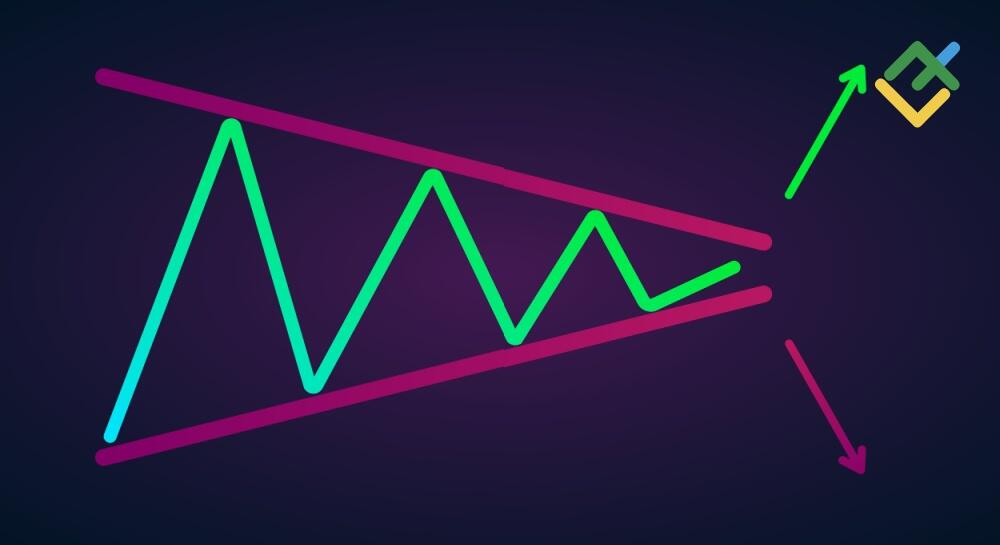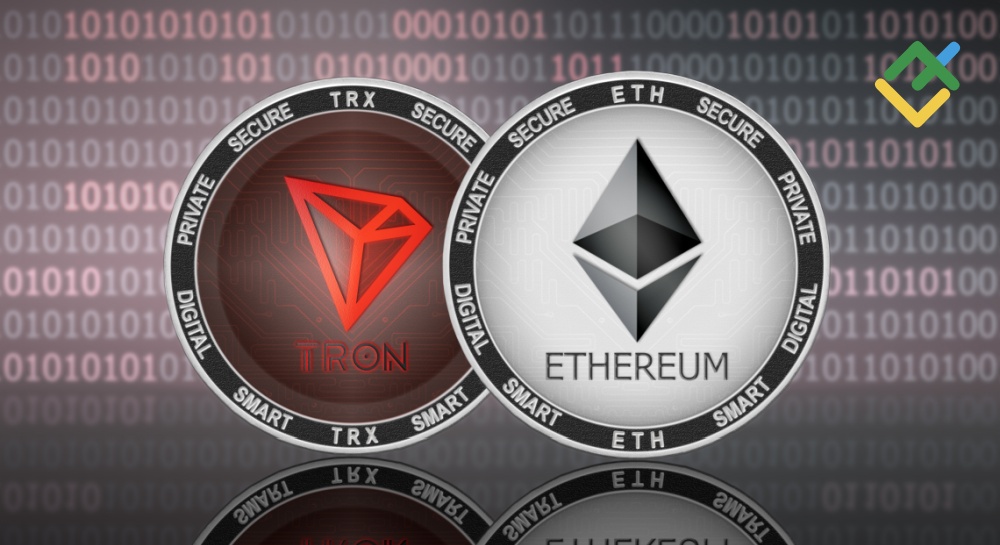
A “Symmetrical triangle” is a notable technical analysis pattern that helps traders make more informed decisions. The pattern arises when trend lines converge, indicating an equilibrium between buyers and sellers. The price fluctuates within a range, reflecting a temporary uncertainty in the market. A breakout of this range can signal either a continuation of the current trend or its change. To trade a “Symmetrical triangle” pattern profitably, it is crucial to correctly identify the breakout point and adjust your strategy depending on the direction of price movement.
The article covers the following subjects:
Major Takeaways
-
A “Triangle” pattern is a formation on a chart that occurs due to converging trend lines indicating a temporary equilibrium between buyers and sellers.
-
The pattern can warn about the existing trend continuation or its change, depending on a potential breakout direction.
-
“Symmetrical triangles” usually emerge when there is uncertainty in the market when the forces of bulls and bears are roughly equal.
-
A breakout of one of the pattern lines signals the beginning of a new trend, most often supported by an increase in trading volumes.
What Is a Symmetrical Triangle Pattern?
A “Symmetrical triangle” is one of the basic patterns of technical analysis, signaling market uncertainty. It forms when the price starts to oscillate within a narrowing range bounded by two trend lines. One line connects the highs, and the other connects the lows.
This narrow price channel shows the balance of power between sellers and buyers. “Symmetrical triangle” chart patterns themselves do not indicate the future trend direction. However, a breakout can signal either the continuation of an existing trend or a potential reversal. Traders usually monitor trading volume to ensure the strength of the signal since volume growth confirms the reliability of the breakout.
“Symmetrical triangles” can be found in all markets and on any time frame, making them a useful and versatile technical analysis tool.
What Is a Bullish Symmetrical Triangle?
A bullish “Symmetrical triangle” pattern occurs in an uptrend and indicates its potential continuation. The price is moving in a narrow range within the pattern, gradually converging to the point where a new impulse is likely. A breakout of the upper boundary suggests the strength of bulls willing to maintain the trend and continue its upward momentum.
Before entering a trade, traders should verify the reliability of the breakout and take into account trading volume. A confirmed bullish breakout provides a strong signal of uptrend continuation, reducing the risk of entering a position prematurely.
What Is a Bearish Symmetrical Triangle?
A bearish “Symmetrical triangle” pattern emerges in a downtrend, indicating the potential trend continuation. The price fluctuates in a tightening range within the pattern, where the descending resistance line caps upward movement, and the ascending support line limits further decline.
After breaking through the pattern’s lower line, the downtrend intensifies, confirming the dominance of sellers in the market. In order to minimize risks, traders should wait for an increase in trading volume, which will validate the reliability of the signal.
What Does Symmetrical Triangle Show?
“Symmetrical triangle” in trading is a pattern that points to the balance of power between buyers and sellers, creating temporary ambiguity in the price movement. The pattern itself does not show the direction of potential price movement, but it does signal an imminent breakout of one of the triangle’s boundaries.
When the price crosses the upper line, it may indicate a continuation of the uptrend. Conversely, breaching the lower line indicates further decline and dominance of sellers. Breakouts are usually accompanied by a surge in trading volume, confirming the reliability of the signal. This pattern can be used on different time frames, making it a valuable tool for assessing potential price direction.
Symmetrical Triangle Example
The XAUUSD chart below illustrates a “Symmetrical triangle” emergence on the daily time frame from March to April 2023. During this period, the instrument was fluctuating between two converging trend lines—a descending resistance line and an ascending support line—forming a classic “Symmetrical triangle.”
As each swing occurs, the highs gradually decrease while the lows rise, creating a narrowed triangle formation. This indicates a period of consolidation in the market when the pressure of buyers and sellers is approximately the same. As for the XAUUSD pair, the price ranged between $1,920 and $2,010.
After a breakout above the upper line of the “Triangle,” the price jumped significantly, confirming the continuation of the uptrend. Such price movement is considered a signal to open long trades. However, pay attention to the trading volume during the breakout to ensure the strength and reliability of the signal.
How to Spot the Symmetrical Triangle Chart Pattern
To identify a “Symmetrical triangle” on a chart, you need to find converging trend lines. One line should connect the descending highs, and the other should touch the ascending lows. These lines should narrow, forming a triangular shape.
Although identifying a “Symmetrical triangle” is straightforward, it is essential to correctly predict the subsequent price direction. A trend line breakout is often accompanied by a strong movement toward the breakout point, which helps traders make more accurate decisions when opening trades.
Bearish and Bullish Symmetrical Triangle Continuation Patterns
A “Symmetrical triangle” can serve as a continuation pattern in both uptrends and downtrends. If the pattern is bullish, the price forms a “Triangle” in the growth phase. If the price crosses the upper line, it confirms its further increase.
A bearish “Symmetrical triangle” pattern appears during a downward trend. When the price breaks through the lower trend line, it signals the downtrend continuation. Trading volume remains the primary indicator in both situations. An increase in volume during a breakout helps to validate the trend direction. Understanding these nuances can help traders to determine optimal entry points depending on the situation.
Symmetrical Triangle Reversal Pattern
A “Symmetrical triangle” reversal pattern indicates a possible change in the trend’s direction. The formation emerges during market turbulence when the price moves sideways within a narrowing range defined by two converging trend lines. If the price reverses and continues to move in the opposite direction after breaching one of the “Triangle” boundaries, it may signal a trend change. For example, in a downtrend, a breakout of the upper line and a further rise in price confirms the shift to an uptrend.
Trading With the Symmetrical Triangle Pattern
Trading a “Symmetrical triangle” involves spotting the moment when one of its boundaries is violated. Traders open positions immediately after the price breaks through the “Triangle” boundaries, regardless of whether it is through the upper or lower line. An upside breakout gives a signal to open a long trade, while a downside breakout creates selling opportunities.
To safeguard against a false breakout, it is advisable to place a stop-loss order just below the lower trend line in a long trade and above the upper one in a short trade. This strategy helps to reduce risks in case of a sharp change in price direction.
Start trading with a trustworthy broker
Bear Trend Trading Strategy
The GBPUSD price chart shows a bearish “Symmetrical triangle” on the daily time frame. Initially, the price moved downward, suggesting a continuation of a decline.
-
Open a short trade below the support line of the “Triangle,” where the price broke through the pattern’s lower boundary, confirming the beginning of the downward movement. The entry point is approximately 1.26500.
-
A stop-loss order is set slightly above the upper line of the “Triangle,” near 1.27500, to safeguard the trade if the price reenters or breaches the pattern from below, signaling a trend change.
-
The price target is calculated by measuring the distance between the high and low within the triangle’s boundaries, which is roughly 0.01500. Subtract this value from the breakout point to get the target price level, which, in this instance, is near 1.25000.
Thus, the strategy suggests the continuation of the downward movement until the price hits the target of 1.25000, assuming a bearish trend is maintained.
Bull Trend Trading Strategy
The GBPUSD chart below displays an example of trading with the “Symmetrical triangle” in a bullish trend.
-
The position is opened after the upper boundary breakout, giving a bullish signal and indicating the possibility of the uptrend continuation. The entry point is approximately 1.26800.
-
A stop-loss order is placed below the lower boundary of the pattern near 1.26000. This strategy helps to mitigate risks in case the price changes direction and returns to the “Triangle” boundaries.
-
The profit target is set near 1.27600. This value is determined by the height of the “Triangle” and the potential price movement after the breakout. This method helps to lock in profits when the target level is reached.
This strategy involves trading on a breakout with predetermined stop-loss and take-profit levels, which helps to minimize risk and maximize profit during an uptrend.
Trend Reversal Trading Strategy
The screenshot shows an example of trading a “Symmetrical triangle” on the BTCUSD chart.
-
A long trade is opened once the price touches the upper line of the “Triangle” at $35,000, signaling a possible continuation of a bullish trend.
-
A take-profit order is set at the $48,000 level, determined by adding the pattern’s height to the breakout point. This level defines the expected target if the upward momentum persists.
A “Symmetrical triangle,” in this case, acts as a reversal pattern, indicating a shift from a downtrend to an uptrend. A breakdown of the upper line is a signal to open a long trade with the target at $48,000.
The Differences Between a Symmetrical Triangle and Pennant
A “Symmetrical triangle” and a “Pennant”’ are two similar chart patterns in technical analysis, but they differ in their formation and signals. A “Symmetrical Triangle” occurs in a phase of market uncertainty and can signal both trend continuation and reversal. It forms on the basis of converging trend lines, and the breakout of one of the boundaries indicates the beginning of a new trend.
A “Pennant,” in contrast, forms after a sharp price movement and is a trend continuation pattern. It signifies a short-term consolidation phase, after which the price usually continues to move in the direction of the previous trend. A “Pennant” resembles a small “Triangle,” but it occurs amid a strong price impulse.
Advantages and Disadvantages of Symmetrical Triangle Pattern
A “Symmetrical triangle” formation is one of the most common and widely recognized patterns in technical analysis, which has a number of both positive and negative characteristics.
|
Advantages |
Limitations |
|
A “Symmetrical triangle” suggests an imminent price breakout that may lead to a significant price movement. |
The pattern does not predict the direction of the breakout, implying a level of uncertainty. |
|
The pattern is universal and works on any time frame and in all financial markets. |
The signal requires confirmation by the trading volume and candlestick patterns. |
|
The pattern is frequently observed, making it easy to pinpoint even for novice traders. |
False breakouts are possible, especially in markets with low liquidity or weak volatility. |
The pattern’s main advantage lies in its versatility, allowing it to be applied across various markets and time frames, from minute to daily and weekly charts. This flexibility makes the pattern convenient for traders of all levels. However, its significant disadvantage is the inability to predict the exact direction of future price movement. To reduce the risk of errors, you should wait for confirmation of the breakout, such as a noticeable surge in trading volume. This will help to avoid opening trades on false breakouts, which can lead to losses.
Therefore, a “Symmetrical triangle” is a useful pattern for analysis but requires a careful approach and additional technical indicators to confirm the signals.
Platform where traders earn more
Trade on LiteFinance’s high-tech ECN platform and open an account so that beginner traders can copy you. Earn a commission for copy trading and boost your income.
Conclusion
A “Symmetrical triangle” is a technical analysis chart pattern commonly utilized to guide trading decisions. It reflects market uncertainty and signals a possible strong price movement after the breakdown of one of the trend lines.
Despite its versatility, a “Symmetrical triangle” pattern itself does not give an accurate indication of the existing trend continuation or a reversal. That is why buyers and sellers should always pay attention to trading volumes and other confirming indicators.
This pattern is used in bullish and bearish markets and can signal both trend continuation and reversal. The versatility of the pattern makes it an effective tool for analyzing the charts of any time frame and financial asset.
Symmetrical Triangle Pattern FAQs
A “Symmetrical triangle” is not clearly bullish. It only signals an equilibrium between sellers and buyers and foreshadows a breakout in either direction, which can lead to both price growth and decline.
This pattern is neither bullish nor bearish, suggesting a breakout can occur in either direction—upward or downward—depending on the subsequent price movement. Essentially, it signals a potential momentum.
A “Symmetrical triangle” pattern is a chart formation where the price fluctuates between converging trend lines. The pattern reflects market uncertainty and serves as a signal for potential future price movement. The direction of the price shift will depend on which boundary of the pattern is broken.
Traders open positions once the price breaks through one of the “Triangle’s” sides. If the breakout is upward, long trades are opened, and in case of a bearish breakout, short positions are initiated. The decisions depend on the direction of a breakout and risk analysis.
A bullish breakout success rate depends on the market condition and the quality of the analysis. By employing a proper approach and considering various factors that can influence a trend’s continuation or reversal, it is possible to achieve a high percentage of accurate forecasts.
An “Expanding triangle” is considered the opposite of a “Symmetrical triangle.” It reflects price divergence and points to an uptick in market volatility. This pattern indicates instability and can signify an impending price change.
The content of this article reflects the author’s opinion and does not necessarily reflect the official position of LiteFinance. The material published on this page is provided for informational purposes only and should not be considered as the provision of investment advice for the purposes of Directive 2004/39/EC.
{{value}} ( {{count}} {{title}} )
This post is originally published on LITEFINANCE.

